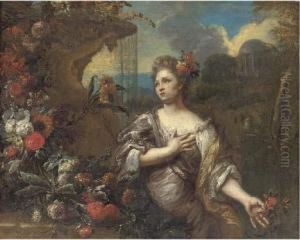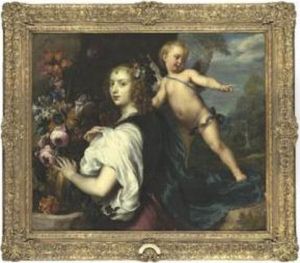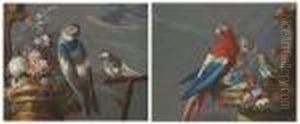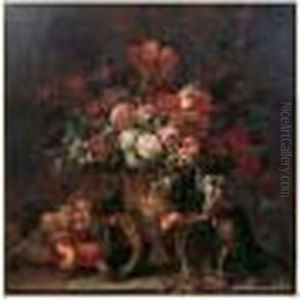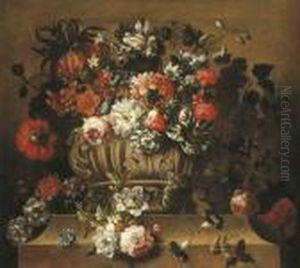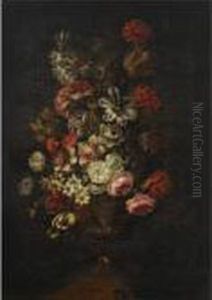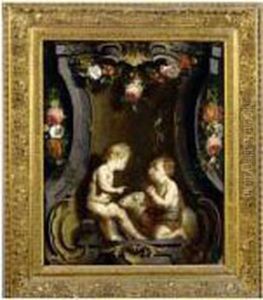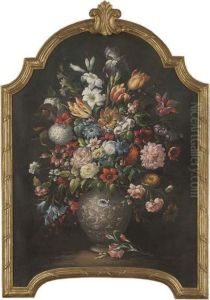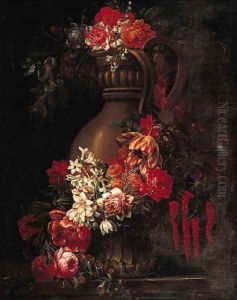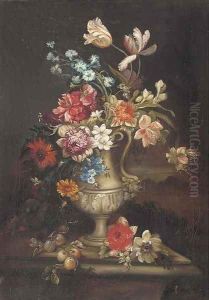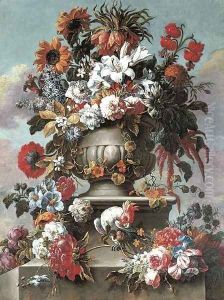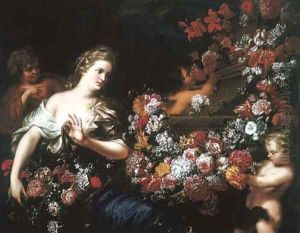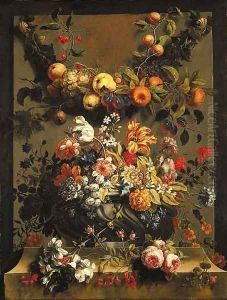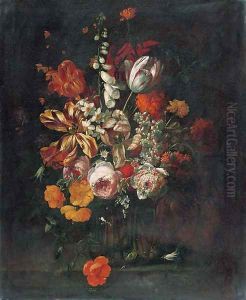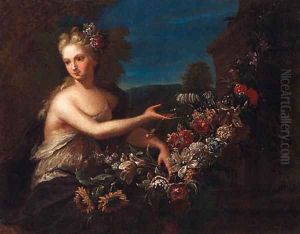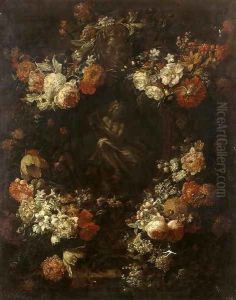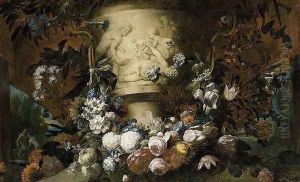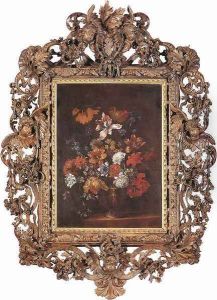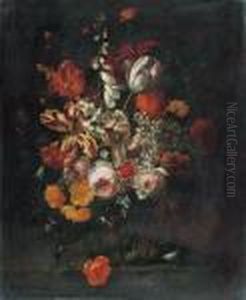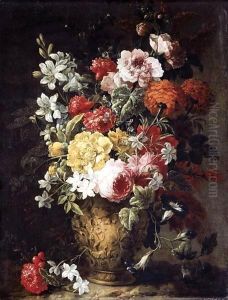Gaspar-pieter The Younger Verbruggen Paintings
Gaspar-Pieter the Younger Verbruggen was a Flemish painter known for his contributions to the Baroque style of still life and flower painting. Born in Antwerp, Belgium, in 1664, into a family with artistic roots, Verbruggen was destined to follow in his father's footsteps. His father, Gaspar-Pieter Verbruggen the Elder, was also a respected painter of his time, which greatly influenced the younger Verbruggen's career.
Verbruggen the Younger's work was characterized by its vibrant colors, dynamic compositions, and the detailed rendering of flowers and plants. He often painted lavish bouquets placed in ornate vases, which were popular among the affluent classes of the time. His paintings not only depicted the natural beauty of the flora but also often included insects and other small creatures, adding a layer of liveliness and intricate detail to his compositions.
During his career, Verbruggen worked in various cities, including Antwerp and Brussels. He became a master in the Antwerp Guild of Saint Luke, which was a testament to his skills and reputation as an artist. Verbruggen's style was influenced by other prominent flower painters of the period, such as Jan Davidsz. de Heem and Daniel Seghers. However, he managed to develop his own unique approach, which helped to secure his place among the notable artists of his time.
Verbruggen's art was highly sought after, and he received commissions from both religious and secular patrons. His works were appreciated for their decorative quality and their ability to capture the transient beauty of nature. Despite the fact that still life and flower paintings were considered to be of a lower genre compared to historical or religious subjects, artists like Verbruggen elevated the form through their skill and creativity.
Gaspar-Pieter the Younger Verbruggen died in 1730, leaving behind a legacy of beautiful artworks that continue to be admired for their technical prowess and aesthetic appeal. His contributions to the Flemish Baroque tradition remain significant, and his paintings can be found in various museums and private collections around the world.





